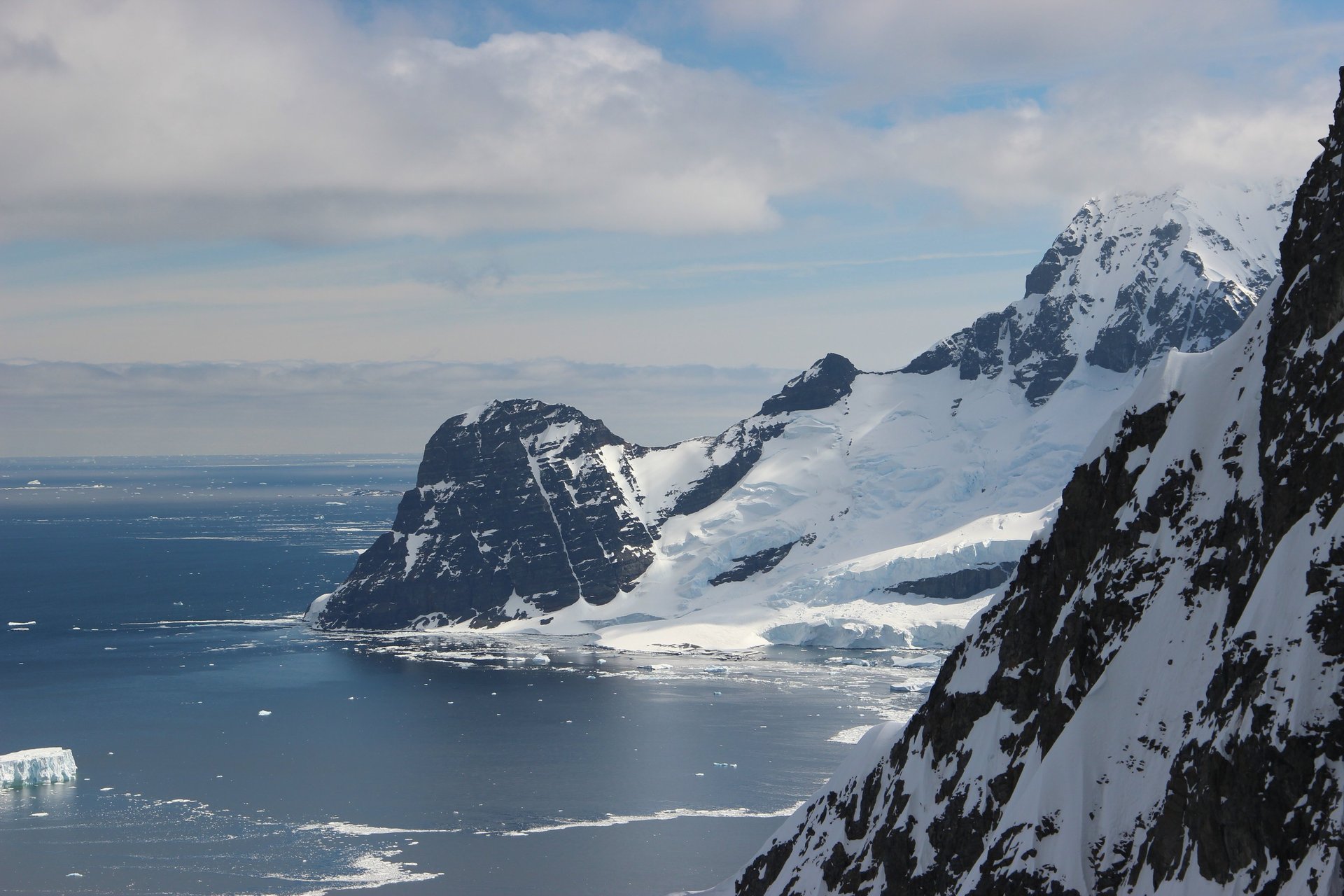
Antarctic Climate
Climate
Antarctica is the coldest, windiest and driest continent on Earth and covered almost completely by a thick cover of ice and snow. Only 0.5% of Antarctica’s surface area is snow and ice free during the short summer months and these regions provide habitat for the few terrestrial organisms to survive. Antarctica cannot be simply described by one climate as there are large differences in terms of temperature range and precipitation patterns across the continent. The heart of Antarctica is cold with winter air temperatures ranging from -50 to -12 °C and summer temperature hardly reaching above freezing. The coldest temperature on earth (-93 °C) was recorded in the interior mountain regions of Antarctica. Temperature rises when nearing the coastal regions and includes more hours-days above freezing during summer months. The coastal regions of the Antarctic Peninsula region (ca 72° S reaching north to the South Orkney Islands) are warmer still, with summer temperatures around freezing and sometimes reaching well above 10 °C during sunny days. In addition, precipitation can fall as rain instead of snow. Winter in the Antarctic Peninsula regions can however, still drop down to -45 °C. The isolated islands surrounding Antarctica are classified as sub-Antarctic and have between 6-12 months of positive air temperatures annually.
Antarctic Climate

Microclimate
Conditions on the ground, where nearly all Antarctic terrestrial life thrives, can differ greatly from the air temperature conditions described above for a number of reasons. Long term climate data is obtained through weather stations where a thermometer is shielded from exposure to direct sunlight to measure the air temperature. A moss or lichen growing on the ground is however exposed to direct sunlight and absorbs this radiation heat, thereby reaching temperatures tens of degrees above that of the air temperature. On clear sunny days, surface temperatures can reach 30 °C for a few hours even in the Antarctic continent, while the air temperature is well below freezing. These short periods of above zero temperatures often results in considerable snow melt providing a crucial source of water. However, when the sun sets, or travels just above the horizon, surface temperatures can drop considerably below zero and Antarctic terrestrial organisms are repeatedly exposed to freezing and high temperatures between night and day.
Other sources of variability where microclimate differs from weather station data is provided through (micro)-topography. North exposed sun-facing rocks heat up more than south exposed shaded faces, resulting in a 40 °C temperature differences during the middle of the day. Rock faces and boulders also trap snow and, depending on the wind direction can build up a considerable layer of snow, which when reaching ca. 30 cm effectively insulates the ground from air temperature conditions. This sub-nivean microclimate, created by the insulating snow layer, is often quite stable around 0 °C even though air temperature drops down to -30 °C.
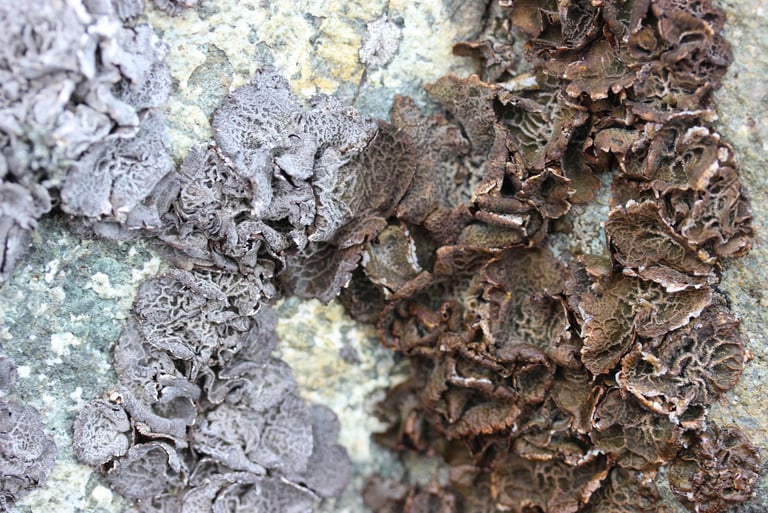

The lichens (Umbilicaria decussata) on the left side of the image are dry and dormant (grey-white), while those on the right (brown-green), growing on a slightly differently sloping surface are wet and active. Small differences in surface angle and exposure can affect if and how much blowing snow is intercepted and can be taken up by lichen when melted. Such cm-scale micro-variations clearly have a large influence on physiological activity patterns
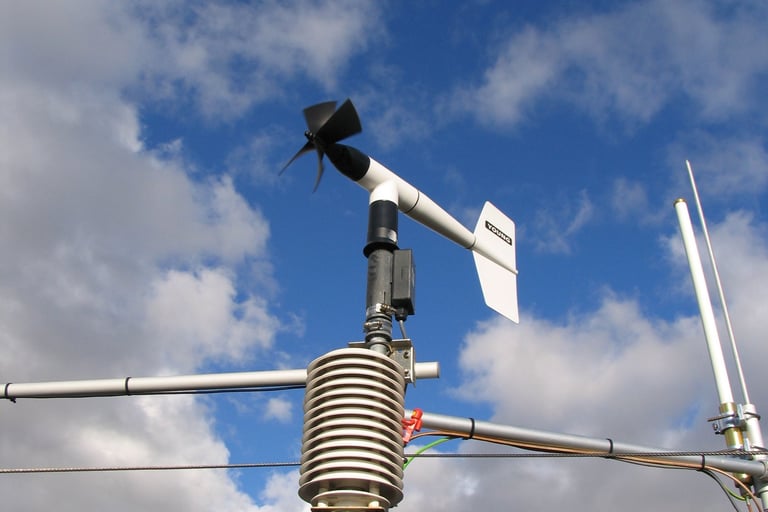

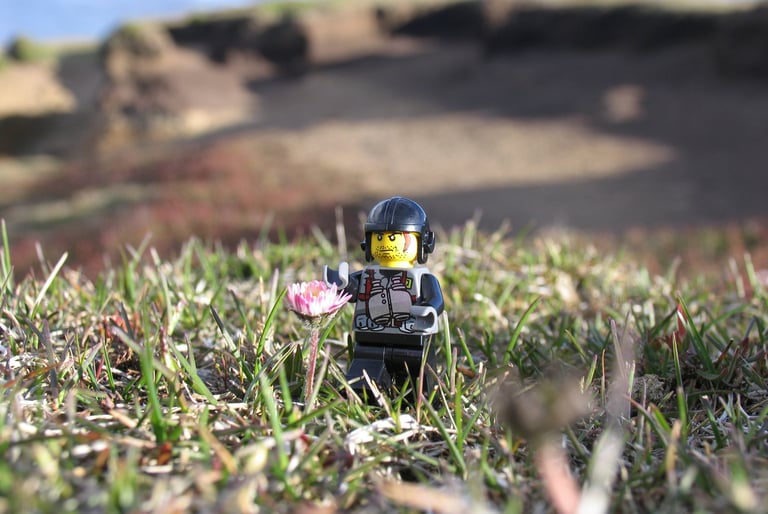

Automated weather stations (AWS) provide reliable and standardised temperature data, but this is not always meaningful for organisms living on the ground.
Organisms on the ground respond to the micro-climate they experience in the soil or among the plants. This micro-climate often deviates substantially from AWS data.
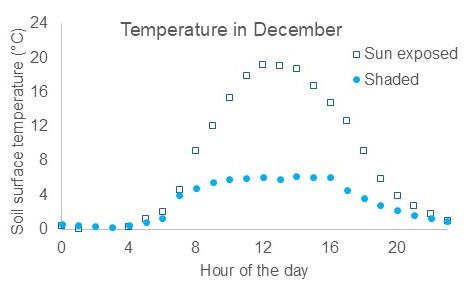

Large temperature differences exist between sun exposed (northern) rock faces and shaded (southern facing) rock faces in Antarctica. The figure shows the mean diurnal temperature records during December on an island of the western shore of the Antarctic Peninsula (Lagoon Island). Mean surface temperature is 10-15 degrees higher during the middle of the day in the sun compared to the shade. During the night, when the sun is only just above the horizon, such differences disappear.
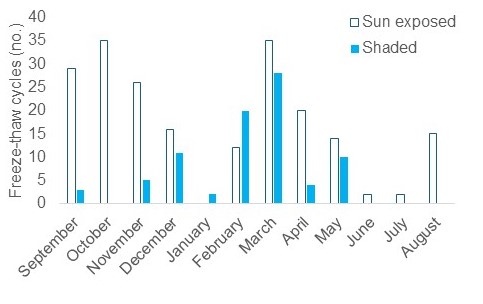

Large differences exist between sun exposed (northern) rock faces and shaded (southern facing) rock faces in Antarctica. The figure shows the frequency of freezing and thawing for each month of the year for an island of the western shore of the Antarctic Peninsula (Lagoon Island). Organisms living in the full sun benefit from the additional warmth, but are also exposed to more freezing events when the sun radiance does not reach their habitat during the night and surface temperatures drop below freezing. Organisms living in the shade need to cope with lower mean temperatures and less sunlight for photosynthesis, but experience fewer micro-climate extreme conditions.

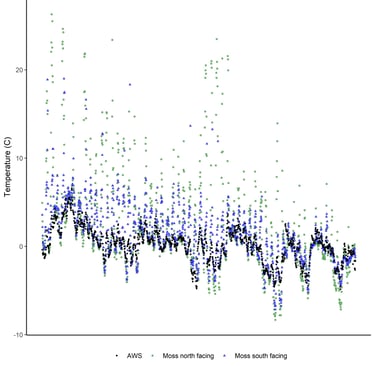
Graph of hourly temperature recordings from an Automated Weather Station (AWS - black dots) and nearby moss habitats on sun exposed (north facing - green square) and shaded (south facing - blue triangle) locations in Antarctica. Hourly temperature variability is much lower in AWS data as the sensor is shielded from direct sunlight, while sensors placed among moss vegetation warms up through direct solar exposure, similar to what the moss experiences.
The 'weather' could be described as close to freezing, while mosses experience temperatures above 20 degrees Celcius during mid-day. (data range on x-axis is from early February until end of March)
Climate Change
Climate change is rapidly changing the current weather conditions across Antarctica with potential large consequences for glaciers and sea ice build up and melt, but also very much so for the life that thrives on land. Climate data from weather stations along the Antarctic Peninsula show warming trends across the last 4-5 decades, which is resulting in longer, warmer and sometimes wetter growing conditions during summer months. Plant life and associated animals and microbes will benefit from these milder conditions and may show population expansion over time. However, climate change includes many unexpected changes, such as heatwaves during periods when organisms are typically dormant or rain on snow events that can create unusual snow pack characteristics that in turn may influence thermal insulation and melt out rates in summer.
Climate Change

Want to know more...
A selection of resources on Antarctic climate
Bracegirdle, T. J., Connolley, W. M. and Turner, J. 2008. Antarctic climate change over the twenty first century. Journal of Geophysical Research-Atmospheres, 113, 13.
Convey, P., Coulson, S. J., Worland, M. R. and Sjöblom, A. 2018. The importance of understanding annual and shorter-term temperature patterns and variation in the surface levels of polar soils for terrestrial biota. Polar Biology, 41, 1587–1605.
Turner, J., Marshall, G. J., Clem, K., Colwell, S., Phillips, T. and Lu, H. 2020. Antarctic temperature variability and change from station data. International Journal of Climatology, 40, 2986-3007.
Many of the above documents are freely available from the publisher websites, but if not, please feel free to reach out to the authors for a copy